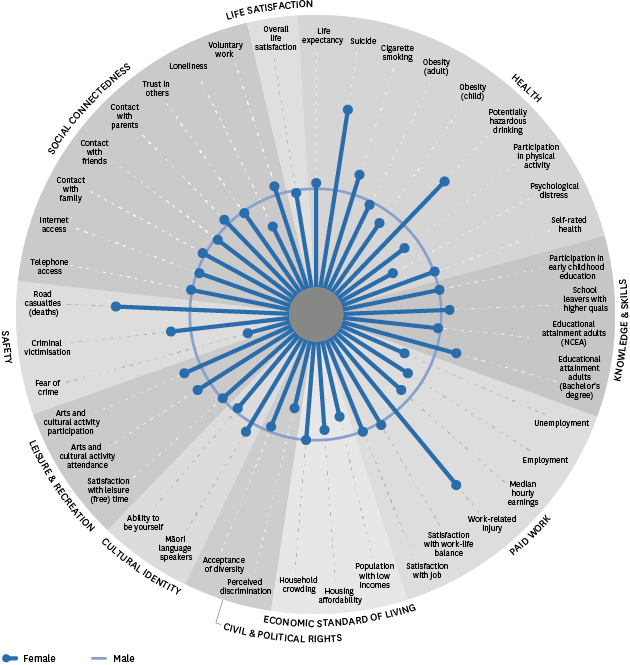Social wellbeing of selected demographic groups
Sex differences in social wellbeing outcomes
Figure DS1.4 – Sex differences in social wellbeing outcomes,
selected indicators, 2012–2014

Interpreting “Sex differences in social wellbeing outcomes, selected indicators, 2012–2014”
Note: In some cases, the data is averaged over the three years in each period. Only indicators where comparisons can be made between females and males have been included. Limitations: This style of presentation means that direct comparisons in the size of sex differences for different indicators cannot be made. Users should refer to the indicator section for more information. While a radial chart may indicate a change or difference in outcomes, the change may not be statistically significant. This will often be true for indicators that fall on, or close to, the central circle. |
|---|

 represents mean outcomes for males.
represents mean outcomes for males. represent mean outcomes for females.
represent mean outcomes for females.